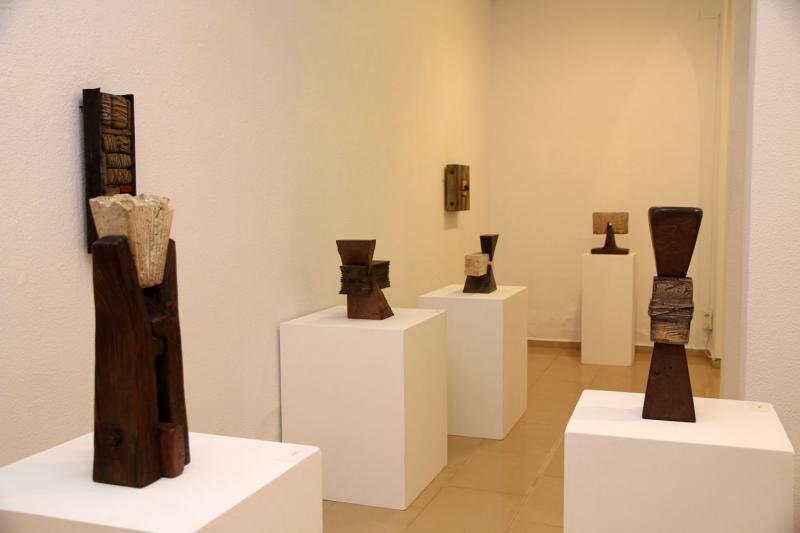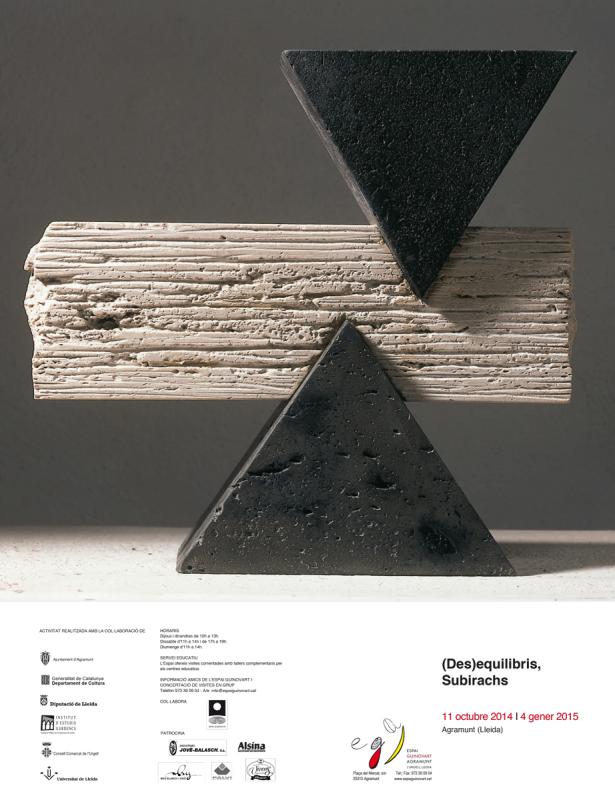Josep Maria Subirachs
(Des)equilibris, Subirachs
Josep Maria Subirachs, born in Barcelona in March 1927, is considered one of the best sculptors in the second half of the 20th century. One of his professional yearnings was to devote himself to architecture. The humble conditions of his family made this dream difficult, and sculpture was the most feasible way to connect with the world of volume, space, structure and construction. But not only did he give us gifts with sculptures; the artistic universe of Subirachs is much more extensive.
Subirachs was a great worker. Its production is enormous thanks to its certainty and its rigor. His style evolved throughout his career, according to the context, according to the public, according to the needs. Influenced by the workshops where he was a student, he began with a nineteenth-century style that quickly abandoned expressionism, which led to abstraction. One of his biographers, José Corredor-Matheos, defines this stage as that of "penetrations and tensions". They are pieces of this decade, the sixties, those that are most in the sample, in which we can observe these penetrations of the shapes and strings that are tense to create opposing duals, which express, consciously or unconsciously, equilibria, stability , gravitations, counterweights, proportions and harmonies. The artist still evolved more, looking at the new figuration that could not convey with abstraction.
The symbolic elements also accompany the entire work of Subirachs. A slender tower of Babel is imposed in the room, next to labyrinths and imaginary constructions that ignore that architecture that could not be constructed throughout its life. Especially in the pictorial work where we see these imaginary constructions that seize the space and make dumb dialogues with sculptures that show similar forms.
The show shows one of the most outstanding facets of the artist: sculpture. In any case, we should not forget that Subirachs also cultivated the drawing, lithography, engraving, illustration, medal, tapestry, poster and stage design. The paintings that are exhibited are the last years of the artist, but his theme still draws ties with his usual work.
With this exhibition we show the sculptor Subirachs from his abstract work of the sixties and nineties of the 20th century and the first decade of the 21st century. The tower of Babel, expressionist, clings to the perennial symbols of its production. Acrylics hanging on the walls discover the last Subirachs, which, in the last stage of his career, still showed us his architectural longing for the balance of shapes and symbols.
Lara Vidal Santorum
Historian of art




